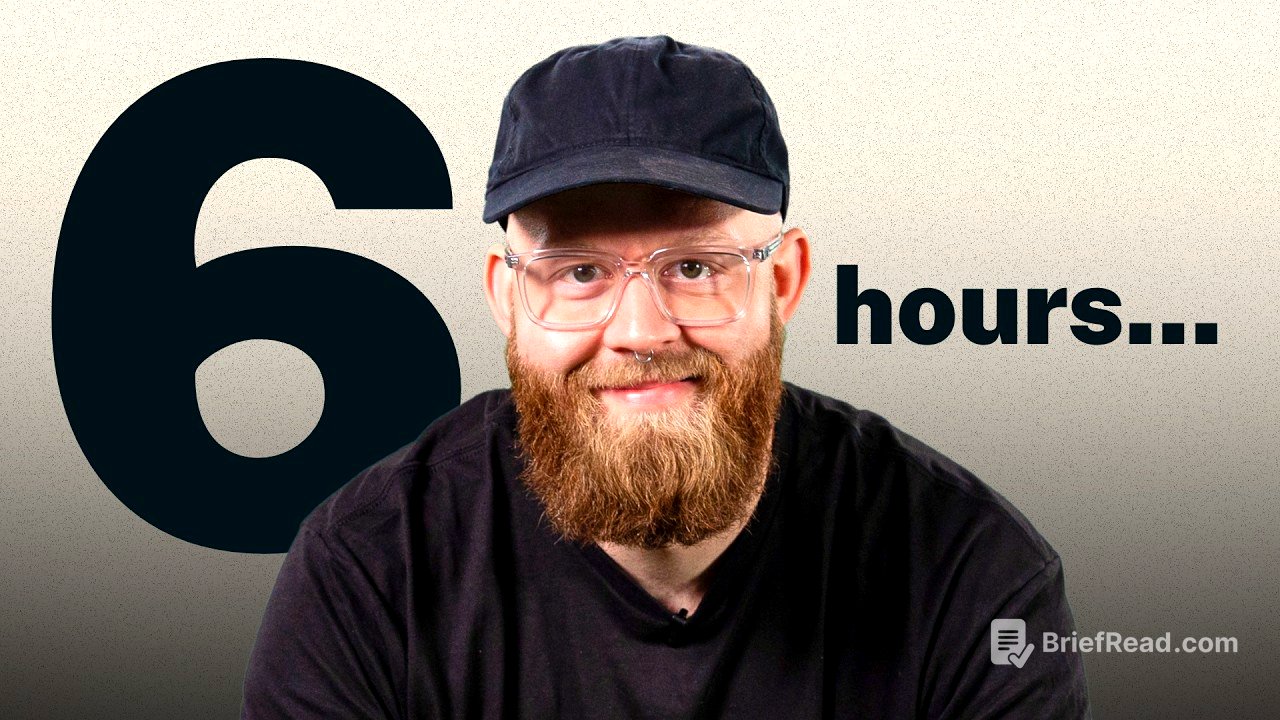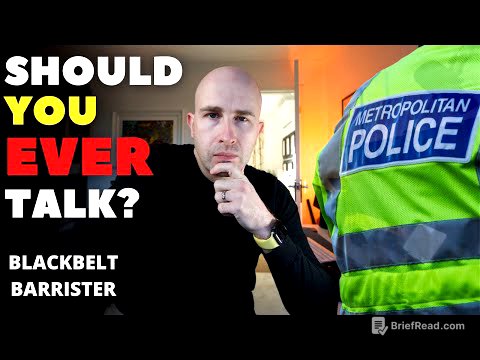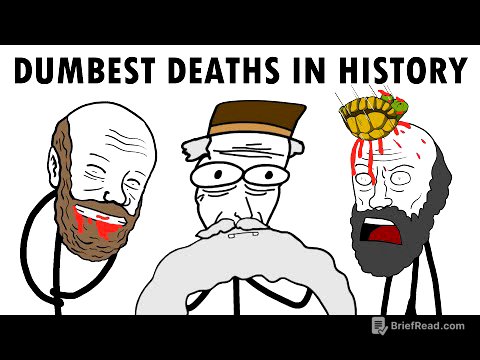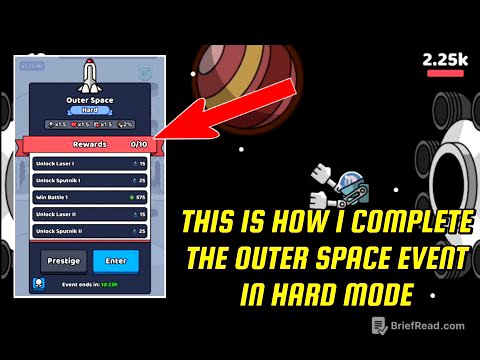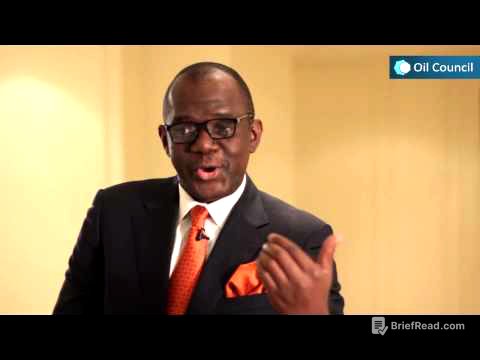Brief Summary
This course provides a comprehensive guide to building a successful brand online, focusing on intentionality, strategic content creation, team building, and effective monetisation. It emphasises the importance of understanding your audience, providing value, and fostering trust to achieve long-term growth and loyalty.
- Branding: Define your brand associations and desired outcomes.
- Content: Create high-quality, engaging content tailored to your audience and platform.
- Team: Build a strong, supportive team with a clear culture and opportunities for growth.
- Monetisation: Focus on building trust and providing value before seeking transactions.
Intro
The course aims to guide viewers from posting random content without clear goals to building an intentional brand that builds trust and drives decisions. It promises to save viewers from costly mistakes and help them break through growth ceilings. The course covers branding, content strategy, team building, and monetisation, drawing from 16 years of experience in building brands online.
What Brand Is
Branding is defined as the intentional pairing of relevant things done consistently, leading to brand recognition when the audience inherently associates those things. Examples include Nike and Michael Jordan (athletic greatness), Gary Vaynerchuk and content, and Harley-Davidson and freedom. The goal is to determine the associations you want your audience to make with your brand and consistently reinforce them.
Define Your Brand
Defining your brand involves taking control of your brand's narrative rather than letting your audience define it for you. The first step is defining your desired outcome and working backwards using the brand journey framework, which involves answering four questions: What is your desired outcome? What do you have to be known for to achieve that outcome? What do you have to do to be known for that? And what do you have to learn to do that? It's crucial to define both what you want to be associated with and, more importantly, what you don't want to be associated with to protect your brand and prevent misinterpretations.
Position Your Brand
Positioning your brand involves finding and filling the gap in your industry rather than blending in. This can be achieved by identifying what existing content creators are not saying or disagreeing with, bringing a fresh perspective to familiar topics, or sharing your unique story. Contrasting yourself with others in the industry and addressing audience skepticism and objections proactively in your content are also effective strategies. It's important to be authentic and avoid being a robot by sharing both wins and losses, and to listen to your audience's feedback to refine your positioning.
Brand Story Framework
The brand story framework consists of three parts: the catalyst (why your brand exists), the core truth (what makes you different), and the proof (how you reinforce your identity). The catalyst involves identifying what needs to change, what opportunities others don't see, and why you feel the need to act. The core truth is about having a different conviction than others in the market and sharing it publicly, while the proof involves consistently reinforcing your identity through your actions and content.
Pick Your Topic(s)
Start narrow by focusing on one specific thing to build early trust and credibility. As your experience and knowledge expand, you can broaden the subject matter you cover in your content. When expanding, ensure you know what you're talking about, gain consistent engagement and positive feedback, and take on adjacent topics. Look at what your audience is asking for and strategically expand in layers, not leaps, while always holding to your core identity.
Section 2: Content
Content is what amplifies the brand, and the content strategy should be built like a personal training program, focusing on long-term sustainability. Avoid trying to replicate what successful creators do and instead determine what you can consistently stick with to achieve the desired results.
Choose Your Content Medium
Choosing the right content medium involves playing to your strengths while ensuring long-term sustainability. The four main mediums are written content (best for LinkedIn, Twitter, Facebook, email newsletters), video content (highest leverage for repurposing), audio content (podcasts), and graphic/design content (infographics, carousels). Evaluate each medium based on your skills, interests, and comfort level, and prioritise one or two to focus on initially.
Choosing the Right Platforms
Prioritise two to three platforms to avoid single-channel risk and focus your efforts. Start where you feel comfortable and build the habit of making and posting content. Consider where your audience is most active and what type of content they prefer on those platforms. While it's important to perform well on the platform, pay more attention to conversions and optimise your content to drive action.
Your Posting Cadence
Determine your posting cadence by starting with the highest leverage platform and using volume for speed and learnings. Increase the frequency of your posts to understand what your audience deems as quality, then compress the accordion and put more effort per piece. Avoid the perfect post trap and remember that speed wins. Use the 80/20 rule, spending 80% of your time on the core subject and 20% on your interests to give your audience more at-bats to connect with you.
Storytelling In Your Content
Utilise storytelling in your content to keep people hooked, create emotional connections, and provide depth. The storytelling framework consists of the hook (grabbing attention quickly), the problem (setting up the stakes), the journey (how you overcame the problem), the lesson (making it useful for your audience), and the call to action (telling people to take action). Share origin stories, failure stories, and success stories to build trust and credibility.
Community Driven Content
Involve your audience in your content creation by addressing their skepticism and objections, listening to their feedback, and making them the hero of the story. Create a feedback loop by looking at your comment section, getting a greater understanding of the skepticism and objections that commonly occur within your audience and start addressing them in the content. Use this feedback to refine your positioning and ultimately know what you can double down on.
Scale Your Content
Scale your content by leveraging a content pillar approach, mining your long-form content for short-form clips, quotes, and LinkedIn posts. Expand in layers, not leaps, and base the topics you explore on your niche and desired associations. Don't be rigid, stay flexible, and remember that these are guidelines to help you and make this easier for you.
Create Room for Experimentation
Create room for experimentation by baking it into your process through content hackathons and the 70/20/10 framework (70% proven content, 20% small improvements, 10% pure experimentation). Adopt a scaling mindset by playing for the long term, focusing on iteration over perfection, and letting the audience determine what is great.
Section 3: Team
Your team is a multiplier of your vision, helping you build something bigger than you could do alone. Remember that you don't hire just for skills, but for culture, and that a bad hire can significantly slow you down. The best teams aren't built overnight and require patience, intention, and investment in people who align with your desired outcome and brand.
Define Your Needs Before Hiring
Define your needs before hiring by identifying what tasks are taking the most time away from high-value work, what's slowing down execution, and what content opportunities are being missed due to a lack of resources. Avoid hiring for general skills and instead focus on platform-specific needs.
Streamline Your Hiring Process
Streamline your hiring process by defining the role clearly using the four Rs framework (role, responsibilities, requirements, results) and implementing a hiring funnel that includes a place for candidates to submit their CV and video, screening calls, technical interviews, technical assessments, and culture interviews. Consider using a try-out system for certain roles and remember to adapt the process to your resources and team size.
Hire for Culture, Train for Skills
Prioritise cultural fit over perfection, as you can train technical skills more easily than changing someone's core values. Look for candidates who are hungry, empathetic, and adaptable, and who align with your brand and desired associations.
Start Lean, Grow Intentionally
Start lean and grow intentionally by avoiding overhiring too early and focusing on building a small, high-impact team. As you scale, allow specialists to focus on their areas of expertise and create a system where they can train others.
Full-Time Employees vs Contractors/Agencies
Decide between full-time employees and contractors/agencies based on factors such as budget, workload, expertise, speed, brand consistency, and scalability. Use contractors/agencies for short-term projects, specialised needs, and testing theories, and transition critical roles in-house as you scale.
Onboard Your Team Effectively
Onboard your team effectively by providing a clear plan before day one, assigning a mentor or onboarding buddy, scheduling regular check-ins, and building an onboarding portal or resource hub. Continually define roles clearly and set KPIs for accountability.
Develop and Retain Your High Performing Team
Develop and retain your high-performing team by creating a culture of ownership, empowering them to lead trainings, aligning opportunities with their long-term goals, and providing stretch opportunities. Run effective one-on-ones to discuss workload, career goals, and skill development.
Build a Strong Team Culture
Build a strong team culture by defining and reinforcing core values, leading by example, being transparent about decisions, and paying attention to what your team cares about. Implement a maker-manager schedule to optimise productivity and create a conducive environment for creativity to flourish.
Remote vs In Person vs Hybrid
Decide between remote, in-person, or hybrid work based on factors such as flexibility, collaboration, productivity, cost, and talent pool. While remote work offers flexibility and cost savings, in-person work facilitates easier collaboration and culture building. Hybrid models can offer a balance of both, but may require more intentionality and resources.
Section 4: Monetize
The final section focuses on monetisation, emphasising the importance of building trust before seeking transactions.
Trust Before Transactions
Prioritise trust before transactions by providing value upfront, demonstrating credibility and expertise, and establishing a relationship with your audience.
Define Your Monetization Model
Define your monetisation model based on your strengths, the value you provide, and your audience's needs. The five primary paths are services, products, affiliates and sponsorships, community and memberships, and ads and content monetisation.
Share the Knowledge, Sell the Execution
Share the knowledge and sell the execution by giving away valuable information for free and charging for the help, guidance, and resources needed to implement it.
Build Your Offer Stack
Build your offer stack by starting with one offer, refining it, and then expanding. The simple offer progression includes free content, a lead magnet, a low-ticket offer, a mid-ticket offer, and a high-ticket offer.
Let Your Content Do the Selling
Let your content do the selling by teaching valuable lessons, sharing client success stories, documenting your process, addressing common objections, and using lead magnets to capture data.
Play the Long Game
Play the long game by building long-term trust rather than chasing short-term revenue. Deliver so much value that people feel guilty not buying, build a system where people continue to come back, and protect your reputation at all costs.
It’s Your Turn to Take Action
The course concludes by encouraging viewers to take action, download the playbooks, and share the course with others. It also offers the opportunity to partner with Rston for guidance and support in scaling their brand.
